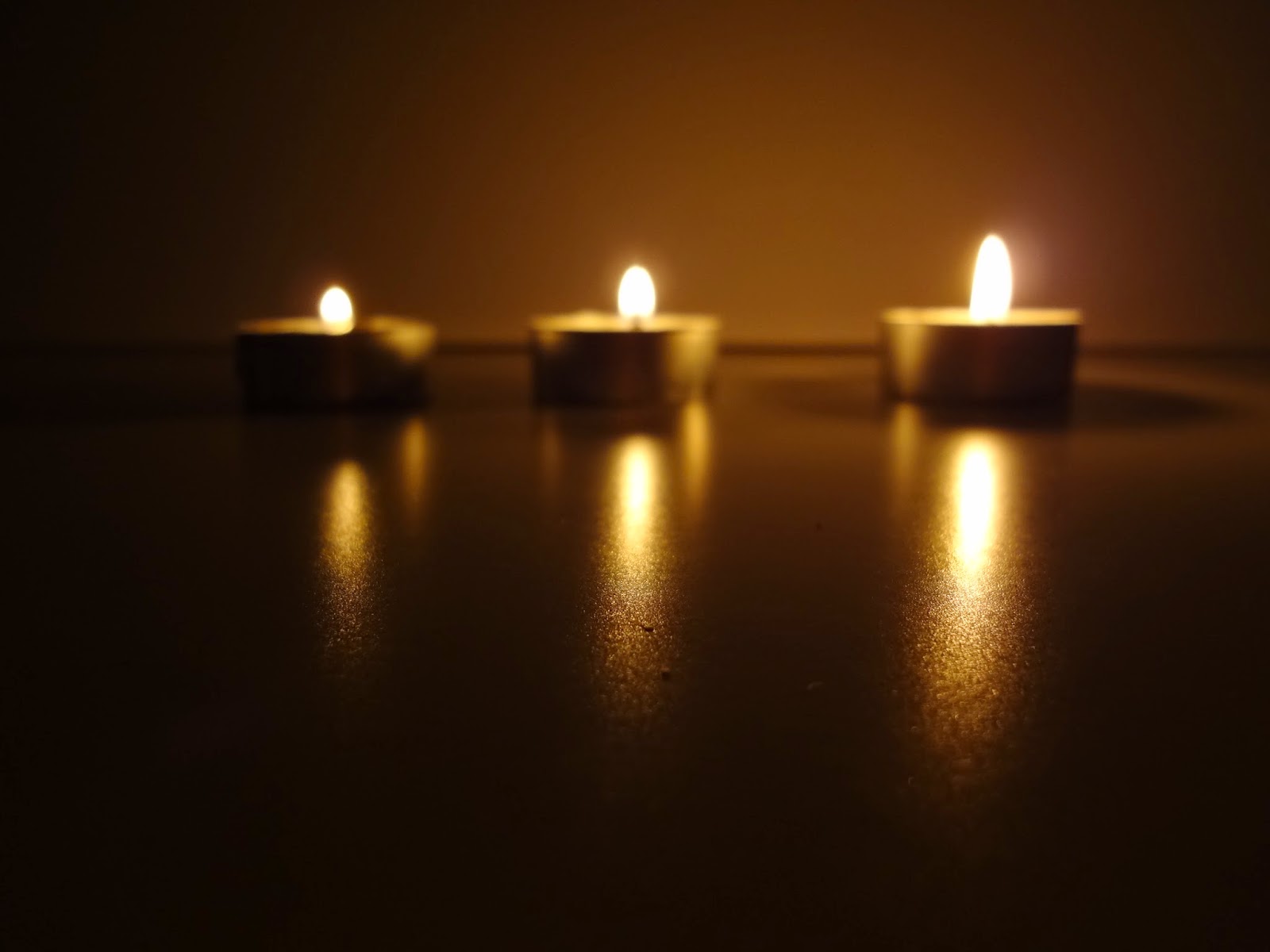 |
| My lantern (made by glass beads and wire) |
 |
| 3D conceptual model, which was created out of a 2D pattern |
 |
| 2D pattern that inspired the 3D conceptual model, and then, the actual lantern |
 |
| Lantern with tea candles (with flash light) |
 |
| Lantern with tea candles (without flash light) |
 |
| Colourful shadows! |
 |
| Different tea candle create different brightness. Petroleum-based one (Right end) was the brightest one. |
 |
| Above different candles without flame |
Made a lantern for a class.
During the class presentation, I noticed that some students' lanterns looked much brighter when tea candles were lit--I assumed that different lantern shape & materials affected the brightness. My lantern was very dark and looked a bit dull--I assumed that the painted glass beads were preventing the candle light to travel through the glass...
After our class presentation was over, a classmate gave me 2 tea candles. Out of curiosity, I lit all candles and compared. Then I noticed that the petroleum-based tea candle, which my classmate gave me was the brightest one. The flame was huge and it lit so brightly. My lantern looked a lot more brighter and shinning with this tea candle! Until today, I never knew that the different tea candles would have different brightness! :O
Having said that, the brightest candle was so bright and powerful, the glue stick that was holding the glass beads together was starting to melt down...
I must say that the real usable lantern has to be made by iron or steel, which would be much more durable against flame and heat. When I use this "lantern" at home, I will be placing this in the upside down position so that this will work as a lovely candle holder.
With the darker and smaller flamed candle, my lantern looked dark and dull during the class presentation, but I'm now glad my lantern didn't melt down during the presentation!! This lantern took me so much time and I absolutely love this. I would be devastated if all the pretty glass beads started to drop down from this lantern in the class.













